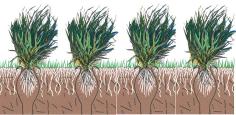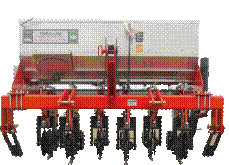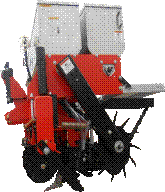

|
Chinese Red Cow Peas In Bahia Grass |

|
Tarver Sales · Folsom, LA 70437 · 800-848-9303 |

|
ABSTRACT “….By starting out farming with a high proportion of the farm in sod, less initial capitalization is required for small tractors and tillage equipment and yield of crops grown behind sod is often 50% or higher than continuously grown row crops. Research from Auburn, Florida and Georgia has shown the impact of bahiagrass on pests, water infiltration, rooting depth, and subsequent yield of crops grown after bahiagrass….” HISTORY “….The fertile soils of the Midwest were in native grasses that built-up organic matter and improved soil structure for many years prior to plowing and cropping corn and soybean. “...It is known that rotation with perennial sod crops will increase organic matter content, water infiltration, improve soil structure, and decrease erosion to a much higher level than any of the winter annual cover crops which have been shown to be better than summer annuals…” “….Perennial grasses in all regions of the U. S. and in other countries have been shown to have a major impact on yield. This has also been the testimony from growers in the South who plant after bahiagrass and pay a premium for land coming out of perennial grass sods….” “….Cooper and Morris put it in context when they described a wheat-sod based rotation by saying that the primary function of sod is to put ‘heart back into the land’….” “...Virginia research showed that winter annual cover crops did not contribute to improved water holding capacity while perennial grasses did….” |
|
Importance of our sod from University of Florida |
|
Excerpts from “Perennial Forage in Rotation with Row Crops in the Southeast” By: D. L. Wright, J. J. Marois, and P. J. Wiatrak North Florida REC, University of Florida, Quincy, FL 32351 |

